Thursday, June 9, 2011
Saturday, April 30, 2011
Camtasia vs CamStudio
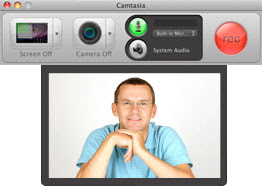
One thing I have learned about taking courses, don't get behind, it may take forever to get caught up. So it has happened to me this semester and I am trying so hard to get back on track, but it is not easy.
Sunday, April 17, 2011
Online Bookmarking
I do find myself saving sites that I come across in educational technology blogs, so that when I do have an opportunity to use them, I have compiled many sites that could be used for educational technology purposes. Here lately, it has really grown, so I need to do a better job of organizing them. If I was using a bookmarking service, I could use different tags to help organize them. Whereas with my browser, the only real organizing is folders, and that works great for me, since all my files on my computer are organized that way, and I am used to that system.
Monday, April 11, 2011
Second Life
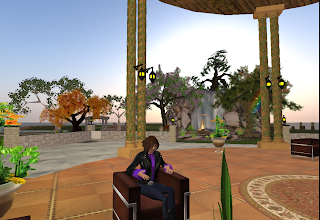 So I visited Second Life again, I had been assigned this project before, so I once again ventured into this 3D virtual world, and I have to admit, it still had no appeal for me. In the photo to the left I am sitting near my favorite feature in Selmo Park, the waterfall. I love the water falling, there is a rainbow and a campfire. I feel very calm here, although I will admit the first time I came to the area, I overshot the ground and fell into the middle of the water and it took me a while to figure out how to "fly out", this visit I did better at walking and flying around.
So I visited Second Life again, I had been assigned this project before, so I once again ventured into this 3D virtual world, and I have to admit, it still had no appeal for me. In the photo to the left I am sitting near my favorite feature in Selmo Park, the waterfall. I love the water falling, there is a rainbow and a campfire. I feel very calm here, although I will admit the first time I came to the area, I overshot the ground and fell into the middle of the water and it took me a while to figure out how to "fly out", this visit I did better at walking and flying around.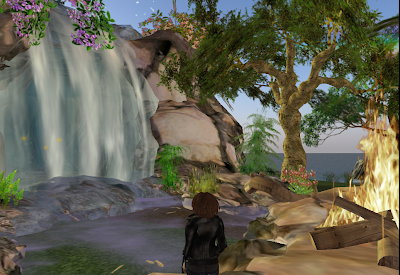
I really believe though that everyone needs to decide for themselves how to best use this in an educational setting. If you have a young, adventurous audience it may really hold their attention and they may learn more than a traditional setting. I would not totally right it off, but I would need that particular audience to make it work.
Saturday, April 2, 2011
Mobile Technology

I am a huge fan of mobile technology that began when I purchased my first video iPod and my love has only grown as the technology has grown. I am writing this blog on an iPad with the on screen keyboard ( landscape mode with two hands, I also have a bluetooth keyboard and an accessory keyboard). I don't type as quickly as an external keyboard but I can work very quickly. On my iPod touch and my phone which is a MyTouch 4G, it is a lot harder to type, so I use a lot more voice commands. It takes lots of patience for the software to understand your voice, but over time it gets easier. So I try to use my devices by their strengths.
So the iPad is awesome for tasks that do not require a lot of input, for viewing and reading. My iPad does not have 3G, so I need to have Wifi for some features. But one thing I need to make clear from the onset, it is a device that works in conjunction with your computer, it is not really a stand alone product. It needs to be synced with a computer to set up and to transfer files. It does not have a large hard drive, so all archiving must be done on the primary computer. This can be accomplished through a wired or wireless connection. So if I have a wireless connection I can download directly to my device and then transfer it to my computer during the sync process, this is how you manage your device, it does not replace your computer but rather is used in conjunction with your computer. The iPad and iPod use iTunes to organize and manage the devices, what many may not know is that even though all your applications are also archived through iTunes, the applications cannot be used on your computer, they are only on the devices. So it is actually very slick marketing to get you to purchase additional hardware and software beyond your computer. So would you need an iPad if you had a laptop? Yes, because many applications only work on the devices, however, if you don't need the applications, then you can just get by with a computer and you can find similar applications and websites that can provide you with many of the tools, but not all.
So if you keep your devices in sync and managed, you can definitely travel with the iPad. It is lighter, more compact, longer battery life and much cooler. I have a MacBook Pro and in about 30 minutes of use it is too hot to sit on my lap comfortably. I also think it is easier to read on my mobile devices, so I much prefer them if I have to do a lot of electronic reading. And iBook is a wonderful electronic reader, it keeps your place (without dog earring the pages). You can highlight text and make notes and you can copy and paste text into documents. I really like reading on my phone because the text width is just right for my eyes to follow easily. The text is formatted to fit the screen, I just experience less eye fatigue, even though I have to use reading glasses. And because it is handheld I can get it at the right distance, which cannot be done easily with my computer. As we become paperless, these devices, I believe will become a necessity in the near future. I can even show coupons on my phone at the register.
Because these devices do not operate exactly like a computer, it requires more wireless technology to transfer files. I use the iPad to take notes at our department meetings. What I usually do is take the agenda and edit that file for the minutes. Now my boss generates the agenda and emails it to me. To get it on the iPad, I can send it to my email, save it to my mobile me, iwork, google docs or Evernote (and since I have discovered that app, it has become my app of choice, it is on all my devices and it takes just a few moments to view my files. I have even upgraded to the premium versions. I make shopping lists on my computer and then view them on my phone when I get to the store, since my phone has mobile Internet when I am away from wifi, although many businesses are providing free wifi.) I can then open the file with pages (paid app, but so worth the price) and type like any word processing application. However, the iPad version does not have all the features that are on my desktop, but it does a wonderful job. Now I do not type on the onscreen keyboard, I need to type faster than the onscreen keyboard allows, so I use an external keyboard that has more keys like tabs and arrows. But I can also create files with the applications on the iPad and it is great to use because I can take it anywhere, outside at a park, or any place quiet that allows me to think and be creative. It is lightweight and easy to carry, it never feels cumbersome or awkward. To get the files to my computer I can sync or I can send it to anyone of my file servers. I don't like emailing documents, there can just be too many versions, I so prefer to share via a server.
So since I am not in a classroom, I am going to share how I would like to use the devices in education. There are so many applications that help you study, I use an application that helps me with my medical terminology class. It has most words installed and I can create flashcards for each chapter. It also has a hangman game. In fact there are many applications to help students who are going into health related fields, and if you have ever seen or carried a science textbook, an electronic version is so much easier to keep with you (and your back will thank you). There are free apps, but the best ones charge a fee, but they are so worth the price and considering that science texts costs hundreds, it is a bargain. Plus you have them after the class so they are available for constant reference and studying for admission exams as well as board/license exams. And if you are working in the field, it is a great tool to keep with you when you need to refresh yourself when you are trying to understand someone's symptoms. And there are many free dictionary and reference apps that you can keep on your devices so when you are working you can look things up on different devices so that you don't have to bounce between windows. My kids use there phones to help with homework when they are at the table, and it is much easier to search than trying to remember where they put their dictionary.
Audible is an audio book service and besides reading my text in medical terminology, I also listen to the audio files. Since this course does not have a lecture portion, it is very important to hear the terms pronounced correctly. Plus I listen to the files when I can't read. Also at the end of the chapter it asks you questions that helps you practice for the exams. I can also listen to them as many times as I need. Every time the textbook reps are on campus I ask them about audio files to accompany their books. Especially for students who commute, they can listen and learn while they drive, or when they are having lunch or working out. And younger kids sometimes have long bus rides and it can sometimes be too noisy to read, but it is nice to put in some headphones and listen and instead of music it could be a book. And for athletes that have to travel and it is too dark too read, instead of losing that time, it could be used to do school work. There are many free apps that will make mp3 files of text documents. So it doesn't have to be your text, it can be articles that you need for assignments and research.
On this topic of audio files, I have a smarten that records audio while I am taking notes, so with the professors permission, I can record and listen to the lecture as many times as I need. The audio even syncs with my notes, so I just have to tap the page and I can hear what was said at that moment. At the lower grades, a teacher could record instructions on how to complete an assignment or a problem and when the student is working, they can listen to the instructions as many times as they need, without disturbing anyone around them. Parents can also listen so they can help their kids. Files can be hosted on a server and then loaded on these mobile devices, then help can be tailored to the needs of the student. Check out Livescribe for more information.
Another app that myself and kids really like is Ibird. This is an electronic field guide that gives you descriptions of birds to help you identify what you are seeing and hearing. When we are in Florida I love photographing birds, but then I want to know what they are, so I use this to help me identify the species and learn more about them. What is also great is there is an audio file of their calls. So even if you are not a naturalist you can use these guides to help you and your students in the field, which is great for field trips. And there are many guides, not just birds (plants, mammals, trees, insects, butterflies and more). And since you can carry many guides on one portable device it is practical and easy to use and remember to take with you.
YouTube video has some ads you have to watch but it shows you how to use the field guides. ( I had to link to the video because iPad YouTube app does not give you embed code, the only way to share is to send the link, it does not have those other options that can be found when using a computer browser, so if you want to embed video, don't publish from iPad. Or if you know something I don't, please let me know).
So I have went on long enough, sorry if my enthusiasm has been a little long winded, but this is technology that is affordable and if you can begin using it, you will probably be just as excited as I am.
- Posted using BlogPress from my iPad
Location:Hazel Hill,United States
Monday, March 21, 2011
Playing around in Moodle and Blackboard Course Management
Sunday, March 6, 2011
I am in love with my Smart Phone
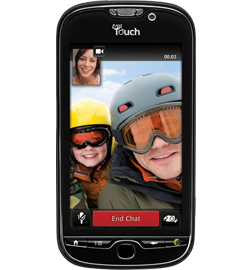
So my first mobile phone was a bag phone that stayed in my car and was mainly there for emergency purposes, phones have come a long way since then. Now they are these mobile pocket computers. I can still make phone calls, but I can do so much more. I can keep a calendar, read my email, search the web, find a local restaurant and get directions, scan bar codes to compare prices and now with evernote I can read files from my phone.
So now I carry my desktop with me in my purse, and what I find really amazing, I like reading on my phone better than my computer. Most sites and apps adapt the width and size of text to optimize it for reading. It is so easy to read, I find myself waiting to read things on my phone. Recently my daughter has required many trips to the doctor and Children's Mercy, so I have had a lot of time in waiting rooms and car trips (my husband drives so I can study) and my phone has been incredible. I can hardly wait until Warrensburg gets high speed internet, pages load so quickly when we are in the city. Of course, if I am in a wifi zone, it is awesome.
It also has an incredible camera and video. I used to carry a separate point-n-shoot camera, but now I don't have to because my phone does such an incredible job. And if we think about it, so many news outlets now depend on eye witness accounts taken with phone video. And even though I don't have an iPhone, my android phone is just as awesome, and in a way I am glad I am learning that operating system, since I have an iPod touch and iPad.
So if we embrace this technology and teach our students to use it for more than just texting, there is a world of educational possibilities. There is even a site called Wiffiti that lets you send text to a cite that can then be displayed, what a way to bring technology into the classroom and let students use this powerful tool they have in their pocket.
Monday, February 28, 2011
Web 2.0 Tools: Fotopedia and SnagFilms
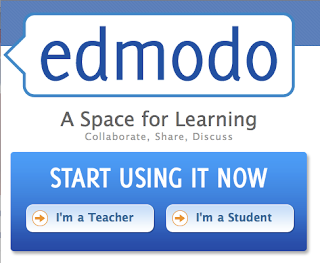
So as I continue to learn about Web 2.0 tools and how I can use them in education, I found three that I am really finding useful. The first is an educational social network site called Edmodo. Not only is it free, safe and secure, there is also an application for your smartphone.
Monday, February 21, 2011
Voki -- Adding Sound and an Avatar to Your Webpage
What is Cloud Computing?
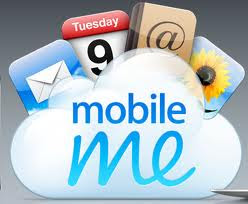
But when asked, I believe cloud computing is the ability to store data and access the data from multiple devices; it is the ability to host information away from the physical original equipment and then share it with others by sharing using an internet address. The data is not limited by software or operating equipment, but by the ability to access the data. Now that I have read it 3 times, I don't know if I did a better job of explaining the concept than the people interviewed in the video.
Monday, February 14, 2011
Photostory and Animoto
Photostory was relatively easy to install and use. The best feature is the ability to record narration with each slide. If you are making an educational video and you want more explanation than just the pictures, this application would be an ideal choice. It also lets you use background music, however, I had a difficult time balancing the music with recorded narration. It was either too low or too loud and getting it balanced was difficult. It only saves in .wmv file format, which I found very limiting. Overall, I was able to produce a product I was proud to share.
Animoto is completely online. Everything is uploaded to the server, it renders the product and sends you an email when the project is completed. It does not have the option of allowing recording per slide, but I could have used Audacity to record my narration and background music, but since you cannot attach the narration to a particular slide or control the pace, I decided against this option. I uploaded my music and I used text slides to fill between the pictures. Not as informative as the presentation in Photostory. However, Animoto's video quality I believe is superior and is a better, easier choice for sharing slideshow images over the web.
So for my subject, I chose macro photography. A while back, a professor approached me and asked me to help him with a project. He needed to not only photograph a dog and deer skull found during field research, he also needed macro shots of the myxomycetes plasmodial tracks on the skulls. It then became my challenge to figure out a way to photograph an oddly shaped object and to position the object at the right angle so that I could do macro shots. I designed a set up that allowed me to do both. The professor was so impressed with the set up, he included a section that I wrote and photographed in a paper he published in Fungi. And while not everyone has the equipment to do macro photography, the technique is useful for lighting and photographing small objects. I am embedding both presentations for comparison. I hope you enjoy. :)
Sunday, February 6, 2011
Using Scene Modes on a Digital Camera Podcast

So instead of just reading, you get to listen to me, I bet you are jumping for joy ;).
Oh No You Didn't!

Oh No You Didn't!
Monday, January 31, 2011
RSS Assignment
Glenda Carmack
INST 5330
Spring 2011
How To Use RSS Or How Not To Use RSS, That Is The Question
So I stole a line from Shakespeare for my title, but it does get to the point of the matter. RSS is an acronym for Rich Site Summary or Real Simple Syndication (Richardson, 2005). The reason for the two variations has to do with the development of the format, but what is important to remember is just the acronym. Initially, it was based on a innovation created by the BBC (British Broadcasting Corporation) which allowed news to be be “pushed” to a desktop application in a ticker tape type display that constantly displayed news Since that was proprietary software, the need to develop an open file format became necessary. Netscape developed a file format in its browser software that allowed the user to personalize their resource list. Unfortunately, Netscape suffered from competition with Microsoft and ceased their involvement. But web blog community needed a system, so W3C (World Wide Web Consortium) worked with developers and built upon the work by Netscape and basically created the version of RSS we use today (Kelly, 2005). Now that we understand the history, lets turn to how RSS can be used.
Since the explosion of the internet, information has become instantaneous in many formats from many different sources, RSS is a resource for aggregating all that Web content in one place. Instead of checking several different websites for updated information, a user subscribes to the different feeds of interest and is notified when new content is available and can be checked via one source. There are desktop version of readers or there are web version of readers. This disadvantage of the desktop software is that it is only available on that computer, and nowadays, many people use several computers. The advantage of a browser based reader, it allows you to access the content from any computer because the information is hosted on a server.
I subscribed to RSS feeds using my mail application on my Mac computer. Since I am constantly viewing my email application, this was very convenient for me. When I view my feeds, it indicates the number of new posts next to the feeds and then I can choose which ones I read. To be able to see the comments, I have to go to the blog post and to comment, requires logging in. Since I already have a google account, I decided to use the google reader. What is nice about google, is the ability to create an igoogle page that displays information based upon your personalization. I added the reader application with just a few keystrokes and placed it on my igoogle page. It gives me the number of unread posts and I can access it from any computer, even my android phone. What is great about mobile ability, if I have time to read, for instance in the car or waiting for an appointment, I can use my device to make the most of my downtime. It may seem like a smart phone is a luxury, but since I need to have the phone, I might as well combine the most features into one device and mobile phones are the most popular mobile device (Garofalakis, 2007). And whenever we get mobile high speed, it will really function nicely. I tried to use Sage as a Firefox plugin, but it would not load my feeds and since my time was limited, I decided to go with google reader. Many web blogs can also push to popular sites, for instance Facebook. Instead of using my RSS reader, I get updates through my news feed. I find this very useful for companies to let consumers know about new products and updates. And even though I am very comfortable with technology, the RSS process is easy to grasp and setup. I did find A Quick Start Guide For Educators by Will Richardson I would highly recommend. He also has a website that I have added and would recommend.
Since I have a full-time job and a family, as well as being a student, it can be difficult to keep on top of the ever changing field of technology. One way I do this is by subscribing to some educational technology sites. I have two sites that I would highly recommend: Educational Technology edited by Ray Schroeder and eCampus News. These two sites provide me with plenty of updates for my limited time. One of the “unofficial duties” of my job is to be a technology advisor to the faculty and students in my academic department. I let them know about software and web resources that I learn about from these sources and I have used them many times. The faculty and graduate students in my department need to know about current research in their sub-disciplines and many use the topic specific sites to keep current which is extremely important in the sciences. By using an RSS search feed, you can set up a feed based on a topic and you are notified when there are any new articles published. For me personally, since photography relies so heavily on technology, it is necessary to stay current in the field and the best way I know of staying current, is the use of RSS feeds.
Overall, RSS feeds is one of the best ways to keep current in most subject matters. As we become more dependent on electronic transmission of information, it becomes necessary to use the best tools to make the information work for us and not work to get the information. By harnessing the power of the RSS, we manage are ability to stay current.
Reference List
Kelly, Brian. (2005). RSS - More Than Just News Feeds. News Review of Information Networking. 11(2), 219-227.
Garofalakis, John. (2007). Using RSS Feeds For Effective Mobile Web Browsing. Universal access in the information society (1615-5289), 6 (3), p. 249.
Richardson, Will. (2005). The ABCs of RSS. Technology and Learning. 25(10), 20.
Monday, January 24, 2011
Open Source

So even though I was familiar with the term "open source" I have to admit, I did not really know much about it. So after doing some research, I have become more acquainted with open source applications and even realized I had been using a few and not even realizing I was using open source.
What really separates open source from free applications and proprietary applications is the ability to edit the application. It is generally licensed under GNU (General Public License). Realizing that in order to edit an application would require knowledge of code and time to spend playing with the application, I have neither, so that is probably why I don't take full advantage of open source applications. I mostly use shareware and proprietary applications, but I do use some open source applications.
The one I use most is Audacity. Audacity is an application that lets you record and edit audio files. I have used it for several years and I am pleased at how easy it is to use. I use it to record my own audio files to playback on my mp3 player (iPod). When I first started taking online classes, the component I missed most was sound. I really missed listening to lectures and having oral discussions, and I would rather talk than have written discussions. So to help myself understand content better, I would read my assignments out loud and record my voice with Audacity. I would then may mp3 files that I could listen to on my computer or iPod.
I found this had several advantages for me, I would actually read the assignment and not just skim it and I learned how to enunciate the words. As I was listening to my assignment, I would also follow along with the text, highlight the main points and take notes. It added that audio component I was so desperately missing. I am a firm believer in the adage: I need to see it, read it, write it and listen to it in order to learn and fully comprehend new material. It is not for everyone, but it worked for me.
Another open source application that I have used is OpenOffice. This software is an office suite software that includes a word processor, spreadsheet, presentation, drawing and database software. It will open many file formats and it will save documents in compatible file formats, so file sharing is easier for the user. I have recommended this option to several students who cannot afford proprietary software. Moodle is open source course management software and I have used it as a student. If a school district cannot afford course management software, this is a viable option for instructors.
So that is my take on open source software. I have learned a lot this week and I am going to work towards posting earlier in the week so I will allow my classmates more opportunity to interact with my posts.
Monday, January 17, 2011
INST 5330 Week 1

I originally set this blog up for personal use with the intention of blogging at least once a week, but fell short, so I am glad for the opportunity to get started again and I hope this class is the impetus to fall into better habits.
A little about myself: I work full time for UCM in the Biology and Earth Science Department as the office professional. The other day on Facebook someone asked me "What is an office professional?" It took me a while to answer, for people outside of academia, it is hard to describe how a department at a university operates, but it is very similar to an office manager with added responsibilities of helping students as well as the faculty and staff. I love the university environment, even with all its craziness and stress, there is no place I would rather work. My undergraduate degree is in photography, and I started my work on a Masters in Educational Technology in the Fall of 2009. I had to drop my class last semester because my youngest daughter was hospitalized and has required lots of follow up doctor's appointments. Fortunately she is going to be okay, but she does have a genetic clotting disorder that makes her more susceptible to blood clots, so as long as we keep her medication in balance and watch for signs of clotting, we will be okay. So since I work full time and have a family that includes my husband of over 15 years, my two older children who no longer live at home, Natasha is doing a Masters in Public Health at MU and Christian is engaged and lives and works in Warrensburg. Tara is in the 8th grade and Reeves is in the 5th grade and keep us very busy, so I only manage a class or two a semester.
I love technology, always have and probably always will. I love how it challenges me to learn and keep learning and have been amazed over the years how integrated it has become in our everyday life. I am also amazed at how quickly we accept technology and become accustomed to it being available. I really believe a place is out dated if it does not have free WiFi available and I can access the internet from my phone driving down the road. I also enjoying teaching others about technology which is why I chose this degree and hope that I can stay in academia in some capacity until I retire, which won't be any time soon. My great fascination at the moment is the iPad and what it has to offer. I am experimenting with using it with data projectors to present electronic presentations, it has wonderful features and is so light weight and portable, I see it replacing laptops very soon. It is not your primary computer, it is still a peripheral, but it packs a mighty punch.
For me to share a favorite book I have read is difficult, most of my free time is spent reading textbooks and articles for classes, so pleasure reading isn't always high on my priority list for free time. But I am a huge fan of audio books, and I believe listening to books can be as important as reading them. So when we drive to Florida for vacation once a year, during that time I listen to books, I can't read in a car it makes me nauseated. So I listen to books and the last one I enjoyed the most was written by an author I went to high school with. He has written a sequel and I hope to listen to it when it comes out on audio. It is called DandyFlowers and it is by Jordan T. Maxwell. Now, I knew him by a different name, so don't go searching my high school class for his name, you won't find it. But I do keep in touch with him on facebook under his pen name and his real name. It is very popular among young christian teenagers, due to its moral message and lack of profanity. It is a very sweet love story and his writing reminds me of our home town and high school. So enough for this week, I look forward to blogging and reading everyone's blogs.